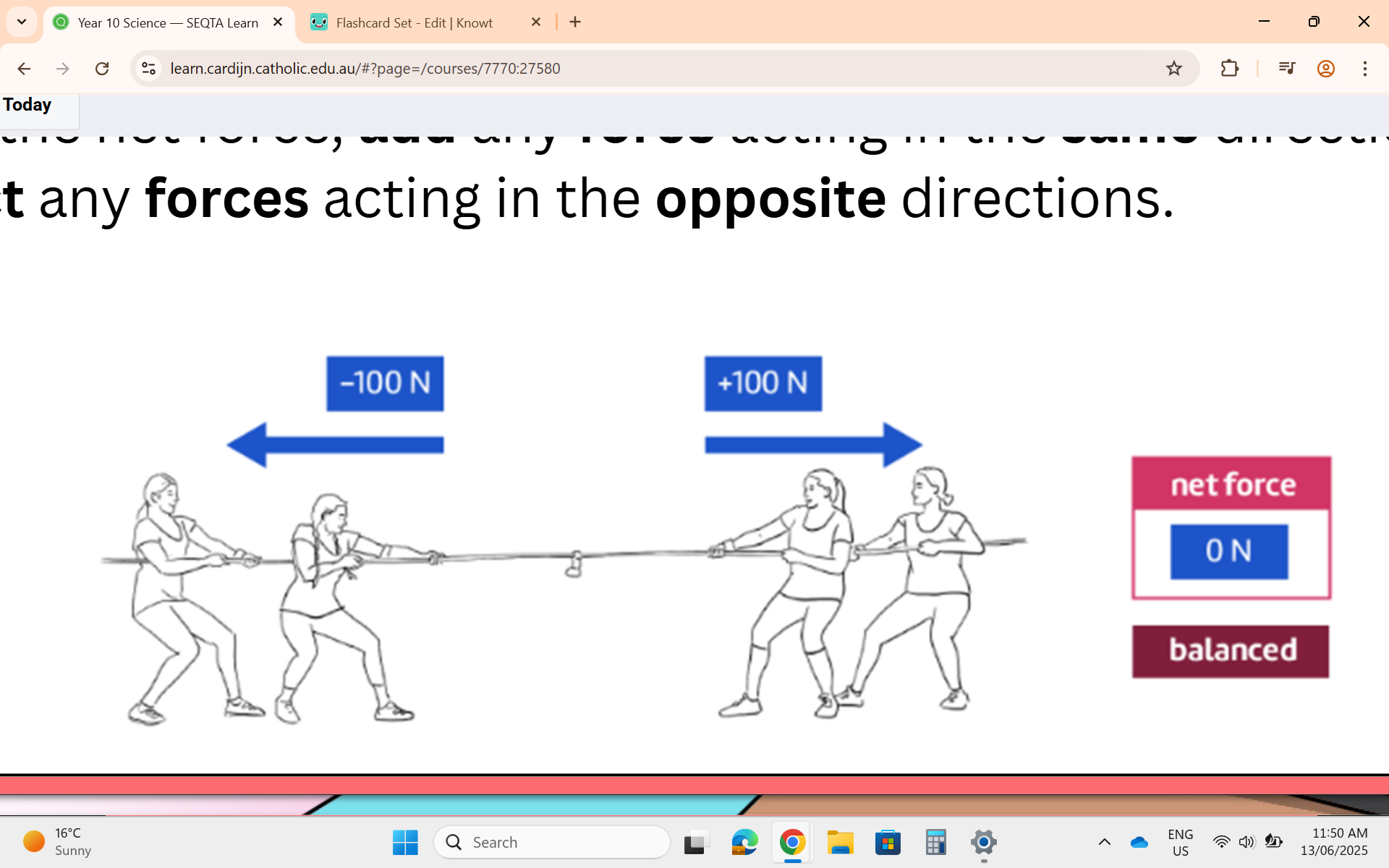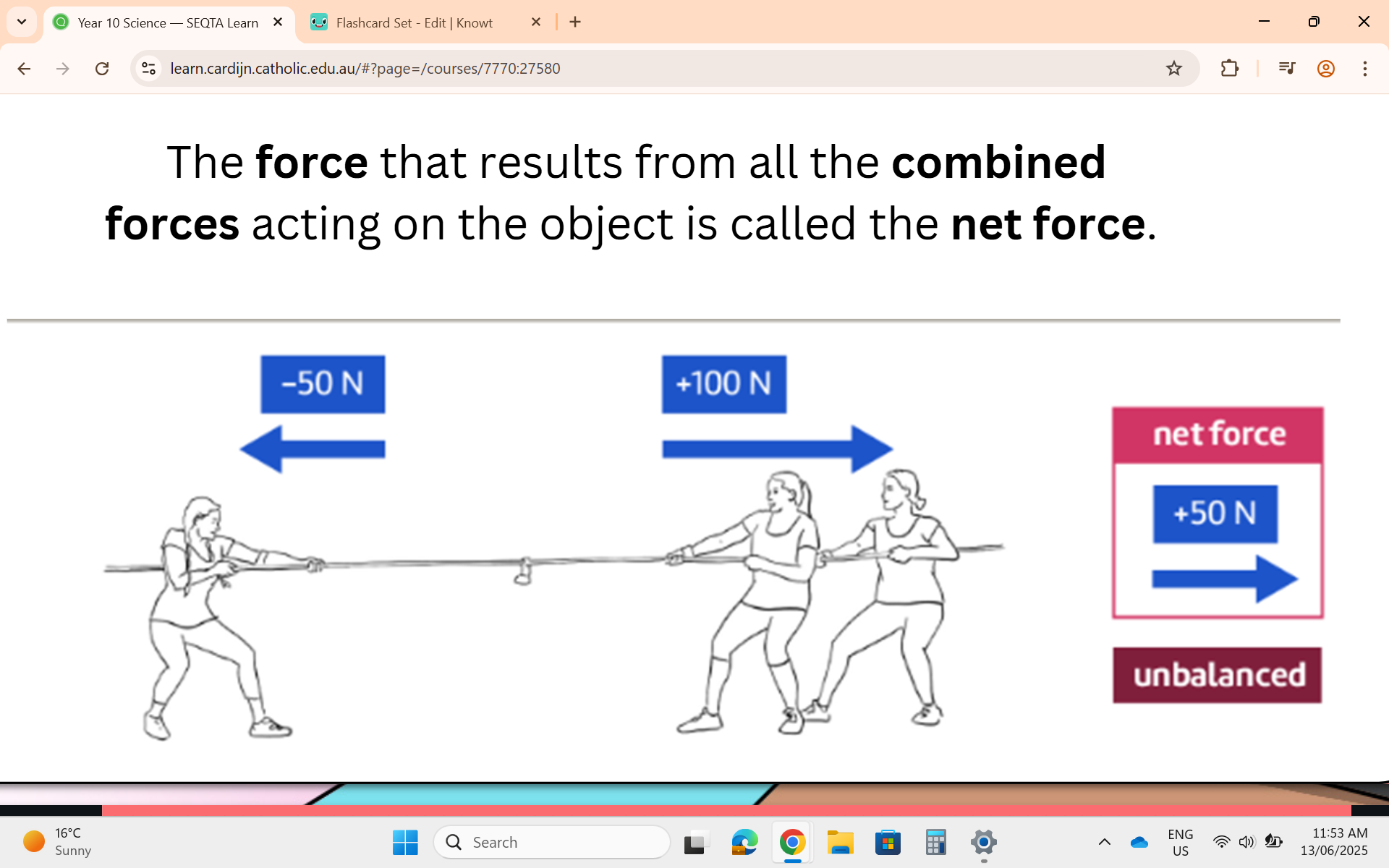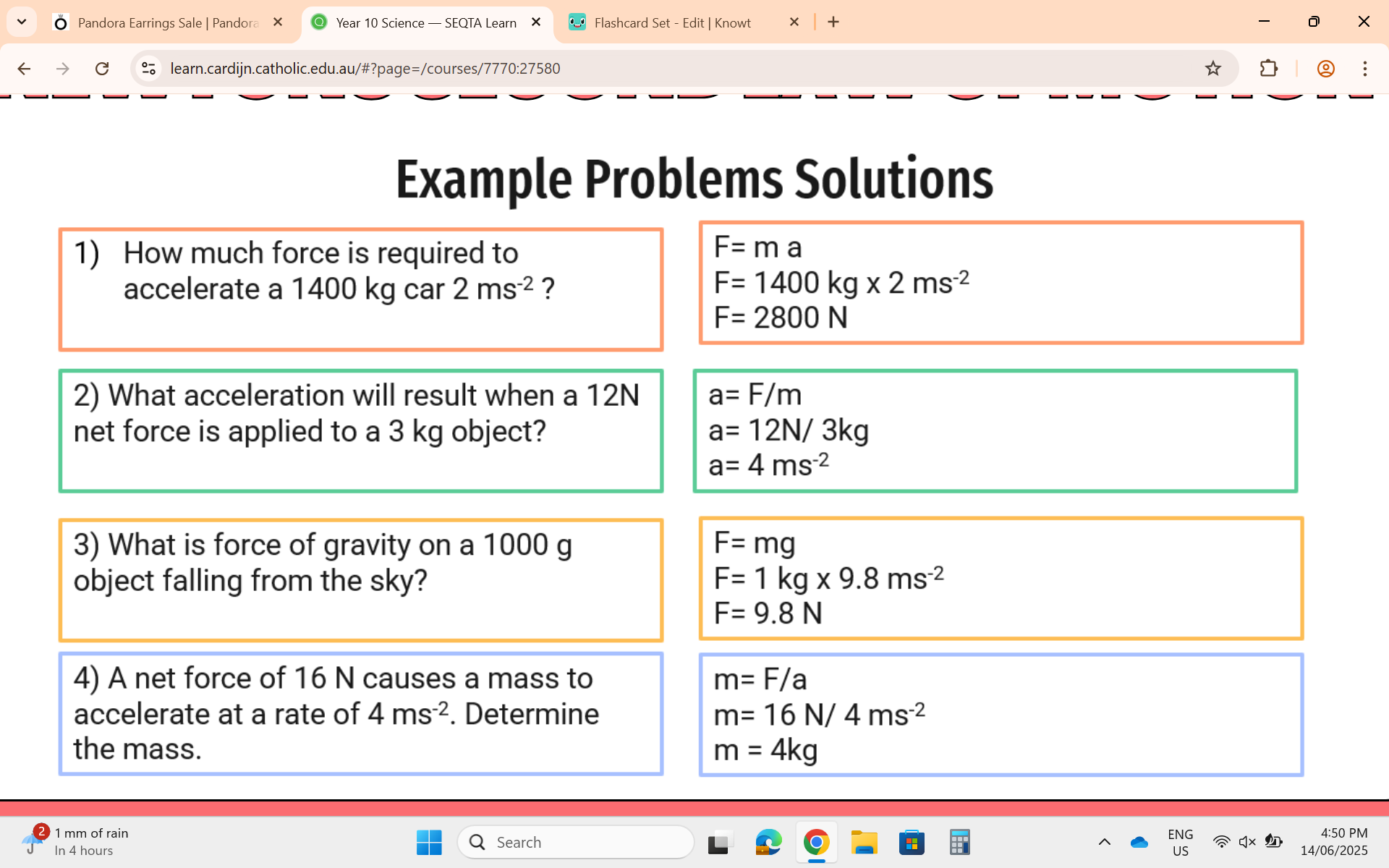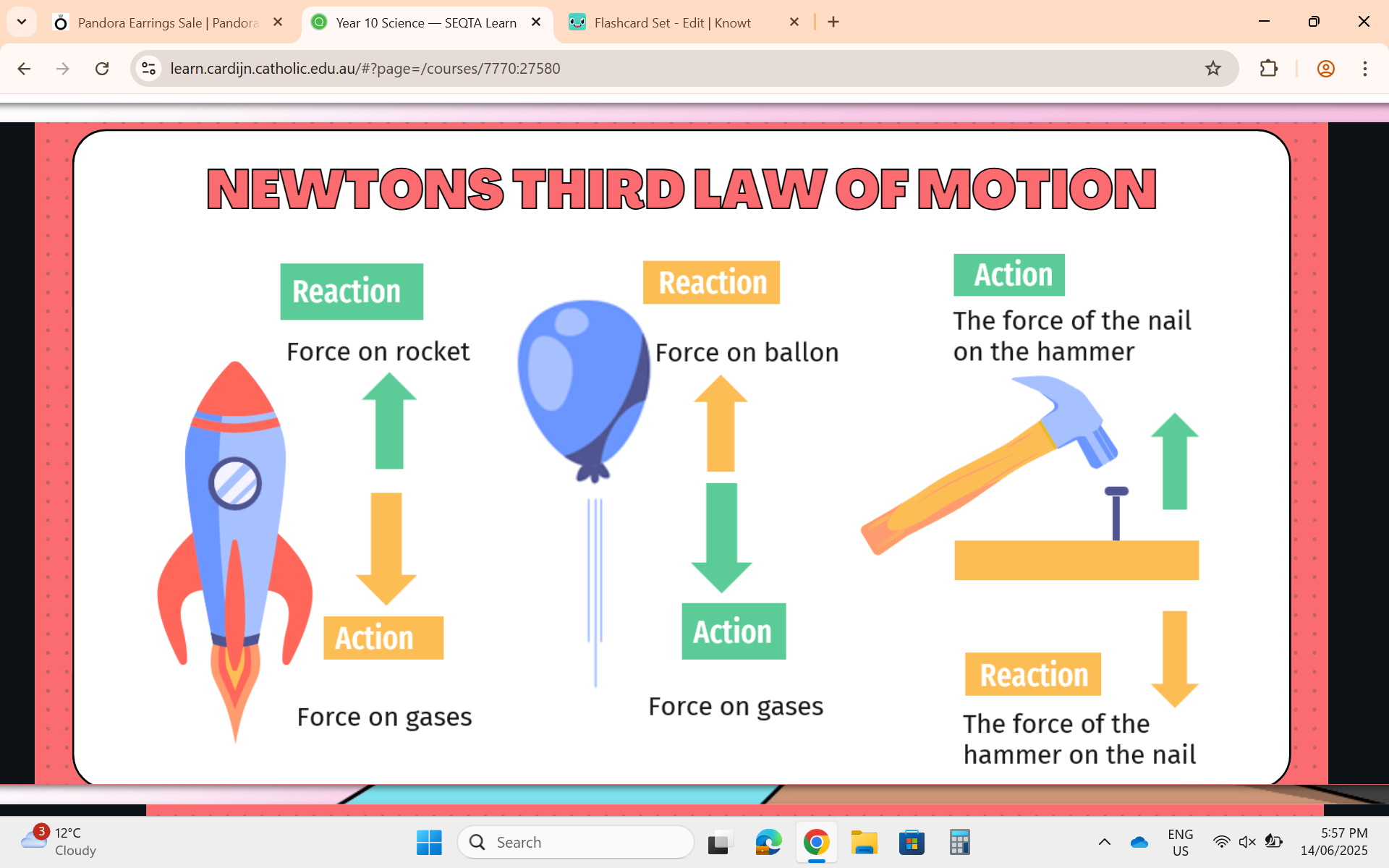Physics Flashcards - Newton's Laws of Motion
1/11
Earn XP
Description and Tags
Nat's Year 10 Science - Physics
Name | Mastery | Learn | Test | Matching | Spaced |
|---|
No study sessions yet.
12 Terms
Newton’s First Law of Motion
Object at rest will remain at rest unless acted upon by a force. Object moving will continue to move at same speed and same direction unless acted on by a force.
Inertia
Object’s ability to resist a change in motion. Large, heavy objects very resistant to movement, therefore they have lots of inertia.
Inertia - Impact on objects
It depends on the mass of the object. Greater mass = greater inertia

Examples of Inertia
Net Force
The sum of the forces acting on a single object is called the net force. To find the net force , add any force acting in the same direction and subtract any forces acting in the opposite directions.

Balanced Net Force
Net Force = 0

Unbalanced Net Force
Net Force = (?) in a particular direction
Newton’s Second Law of Motion
Describes the relationship between force, mass and acceleration of an object. Force (Newtons (N)) = Mass (kg) x Acceleration(ms^-2). Also known as F = ma. More force = faster acceleration and heavier = slower acceleration.


Newton’s Third Law of Motion
For every action, there is an equal and opposite reaction. When an object applies force to another object, the second object exerts an equal force back on the first object.

Examples of Newton’s Third Law of Motion

Normal Force
A force that is perpendicular to the surface that an object contacts. It is always acting upwards or outwards (90 degrees to the surface). It’s a reaction force and balances the action force.